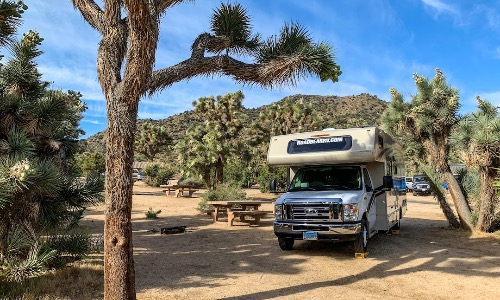It comes up often in discussions, what is the best internet for full-time RV living? Everyone would like decent bandwidth so they can stream, work, or game online. That comes with a cost though and possibly other limitations. Having a full setup for wifi coverage and some Ethernet in an RV isn’t a difficult task, but as with all things technological, if you want something great, you’ll probably have to pay for it.
To start, we need to define a few things. When people ask for the best wifi, they usually want the best bandwitdth through an Internet Service Provider. Wifi is only a short range wireless protocol for devices to talk to each other. Wifi comes from a router and sends data to computers, phones, and other devices.
What people are really interested in is the bandwidth coming into that router from the outside. When you connect to a website, for example, the data goes from Computer to Router to Modem to Internet. Anyone one of these can be the bottleneck and slowing things down. One of them could be incredibly fast, but if the others are slower, it won’t matter, data can only go as fast as the slowest part of the journey.
Let’s start with ISPs.
If you live an RV, you may travel frequently, or you may be stationary. Both are validly RV Full-timers. Which you do greatly influences your type of internet access available.
Stationary RV Living
If you are stationary, whether at a campground or on your own property, you may have a regular, hard-wired ISP available to you. At our last campground, we were able to get DSL to our site, which while slow, was better than the campground wifi and cheaper than a hotspot with limited data.
You may be able to get gigabit fiber connection depending on your location, cable internet, or, like we had, DSL. It depends on what your area has covered and wired for already. This is basically like living in a house or apartment and you may have more than one ISP in the area, or only one and stuck with that.
Hard-wired ISPs are different everywhere in the country, but companies like AT&T, Spectrum, or Comcast may be available. Usually, if you have cable TV access at your location, you probably have cable internet access as well.
Wireless Stationary ISPs
There are recently some new ISPs as well. T-Mobile and Verizon have come out with 5g Home Internet services that are intended for areas that do not have the cable run for other connection types, but can be covered by 5g cellular. These usually run about $50/month for service, but are only available in certain locations. It’s probably more available than something like DSL or Cable, but still not covered absolutely everywhere.
Mobile RV Living
If you are frequently moving, then your options change. Hardwired internet access is no longer a possibility since many of them require contracts and expect you to stay in the same place for a year at least.
The current best for moving and coverage seems to be Starlink Roam. It has a dish on the top of the RV, a router inside, and connects to satellites. As long as you have a clear sky you can usually get some coverage. They are sending up more satellites all the time, so the coverage keeps expanding.
Starlink Roam is $150/month though and $599 for the hardware. So it’s pricey. If you need a connection everywhere though, it’s probably your best bet.
As listed above in the stationary living section, T-Mobile and Verizon have 5g Home Internet options. The key phrase here being “Home”. They are intended for use in remote houses, not traveling, and technically moving from location to location frequently voids the Terms of Service. If you can get it, it will work where you have cell coverage, but they could cut you off if they find out you are living in an RV and moving frequently. It’s not likely, but it’s definitely possible and something to be aware of as more and more people sign up for it.
If Starlink is too expensive and you don’t need a lot of bandwidth, then a Hotspot is an option. Hotspots are small handheld devices that connect to the internet through a cellular connection. They can be more expensive than Home internet, and often have limited data, but they are intended to be moved around a lot and the companies that provide them have no qualms about moving from location to location.
Check the website of your cell phone provider for Hotspots, or check with an alternate company if you want differing coverage. If you have an AT&T cell phone, it might be wise to get a hotspot through Verizon or T-Mobile so if one is unavailable in an area, the other might work fine.

[…] you’ve figured out what ISP you plan to use, the next step is how to connect that incoming internet access to all your devices. That requires a […]